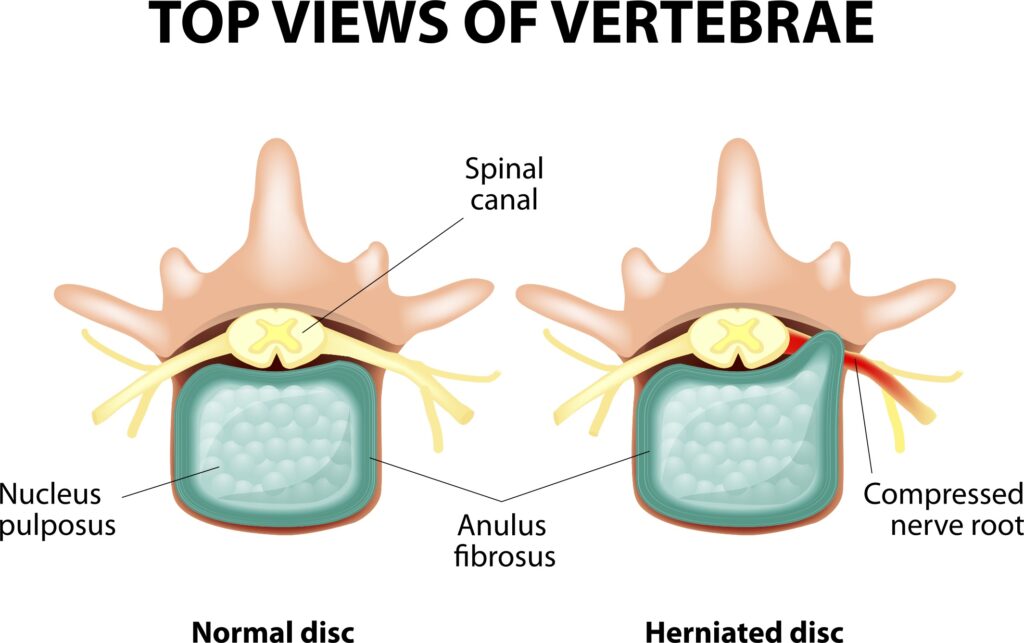
Lumbar disc prolapse, also known as a herniated disc occurs when the soft inner core of a disc in the lower back (nucleus pulposus) pushes through the tough outer layer (annulus fibrosus) and presses on nearby nerves, as they exist the spine. This can result in low back pain together with pain, numbness and weakness in the legs.
The lumbar region of the spine is particularly vulnerable to disc prolapse, as it bears most of the body’s weight and is subject to repetitive motion and strain.
Possible causes of lumbar disc prolapse include age-related wear and tear, injury or trauma, improper lifting techniques, and repetitive strain on the lower back.
Diagnosis of lumbar disc prolapse typically involves a medical history, physical examination, and imaging studies. Magnetic resonance imaging (MRI) is the most effective diagnostic tool, as it can provide detailed images of the spinal cord, nerve roots, and surrounding tissues.
Symptoms of lumbar disc prolapse may vary depending on the severity and location of the herniation. Common symptoms include back pain, leg pain, tingling, or numbness in the legs or feet and weakness in the legs. In severe cases, Cauda Equina syndrome can occur, which is a medical emergency that requires immediate attention. Symptoms of cauda equina syndrome may include severe back pain, loss of bowel or bladder control and weakness and numbness in the legs (especially in an area as if you are sitting on a saddle).
Treatment for lumbar disc prolapse usually includes a combination of medication such as non-steroidal anti-inflammatory drugs (NSAIDs), painkillers and muscle relaxants together with physical therapy including osteopathy and physiotherapy. Osteopathic manipulation involves gentle manipulation of the affected area to improve range of motion and reduce muscle spasm and pain. Physiotherapy may include exercises to strengthen the muscles in the lower back, improve flexibility, and reduce inflammation. In some cases, corticosteroid and/or nerve block injections may be recommended to help reduce inflammation and relieve pain. In rare cases surgical intervention maybe necessary
In severe cases, surgical intervention may be necessary to relive the compression on the nerves. There are several surgical options available, including discectomy, laminectomy, and spinal fusion. These procedures involve removing or repairing the damaged disc and stabilizing the spine.
Red flags for lumbar disc prolapse include cauda equina syndrome, as mentioned previously, but other signs that may indicate a medical emergency include rapid onset of symptoms, sudden loss of sensation or strength in the legs, or difficulty standing or walking, weight loss and fever. If any of these symptoms occur, seek medical attention immediately.
Opening hours:
Monday – Friday 7.00am – 8:30pm
For an appointment
please call 020 7427 0080
© Copyright 2024
LudgateClinic 101 Fleet Street London, EC4Y 1DE
020 7427 0080